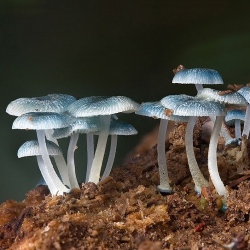
You know what’s boring? Surfaces. Why does an orange always have to feel like an orange? Couldn’t it change it up every so often and feel like a peach or something? And why should all that neat stuff underneath touchscreens always feel like such a, well, touchscreen?
Well, thanks to some intriguing new research, surfaces may finally be free to take on any texture imaginable.
We’ve long chronicled the constantly evolving field of enhanced sensory feedback. But one of the most exciting recent advances in this field comes courtesy of Disney Research (which has been busy lately) and their new technology that can mimic various textures on any nearly surface.
At the recent SIGGRAPH 2012 interactive conference in Los Angeles, the company unveiled its Revel system, which stands for "reverse electrovibration." It works by "injecting" a weak electric signal directly into the user’s body, creating an "oscillating electrostatic field" around the user’s skin.
When the electrically-charged user comes into contact with any object connected to the same ground as the Revel signal, the electrical potential difference between the finger and the electrode generates an electrostatic attraction force that creates a sensation of friction between finger and object. By varying the signal properties such as frequency or amplitude, the system can manipulate different tactile experiences.
Researcher Ivan Poupyrev commented in a research paper (PDF) that the technology can already be used to mimic everything from "virtual pebbles, to fine textures such as sand, to glassy or rubbery materials, to larger spatial geometrical patterns such as grooves, bumps."
The Revel device is only five-centimeters long and comparatively cheap, consisting of only a Bluetooth antenna, microprocessor, digital-to-analogue converter, and a transistor for amplification. The signal can be "injected" into users through a device embedded in a chair, a tablet’s bezel, or even a shoe.
An obvious application of the technology would be for touchscreen devices, giving a dynamic new dimension to the way we interact with apps and games. But, this technology can be fitted for any surface. If an object can already conduct electricity, it’s good to go, otherwise the research team foresees any surface being made tactile-curious via a coating of conductive paint with a thin layer of insulating varnish.
BAM, everything now can feel like everything else.
As long as user and surface share the same ground, a tactile experience can be had nearly anywhere. This mobility opens a world of virtual experience. For example: "smart" paintings could provide new sensory experiences, interactive maps could convey a bevy of wordless information, or your shirt could be programmed start to feel more and more like sandpaper until you check something off your to-do list. The possibilities are nearly limitless.
